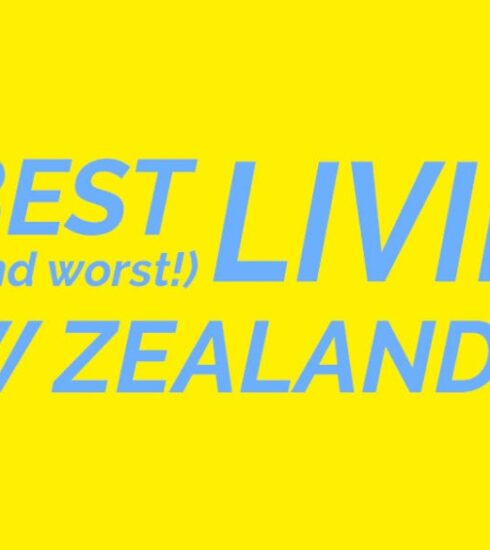Food Fragility – Issue 4
What is Food Insecurity?
Food Insecurity. This is one of those phrases that you’ve probably heard thrown around before. It’s often used in poverty measurement statistics, both in New Zealand and all over the world. It’s a scary phrase to read about, a scary phrase to write about, and a far worse one to live with. When you think about food insecurity, however, you may not realise how simply it can be boiled down. By its most common definition, food insecurity is described as the “state of being without reliable access to a sufficient quantity of affordable, nutritious food”. Thinking about that, the chances that right now, you or one of your classmates are suffering from food insecurity is higher than you might have initially expected.
Who suffers from Food Insecurity?
So food insecurity isn’t just never having enough to eat, it’s not reliably having enough, nutritious, affordable food. New Zealand’s poverty levels are depressing, especially when you consider our first world status, and long-lived reputation as “the land of plenty”, and food insecurity is clearly highlighted in all surveys and statistics reporting on those suffering in our society.
New Zealand’s Child Poverty Action Group reported that over one third of New Zealanders experience moderate-to-severe food insecurity, and that more than 160,000 children living in households that experience food insecurity, either not having access to enough food, or to the food that they need to grow and develop healthily.
The Auckland City Mission reported that food insecurity levels “skyrocketed” after the emergence of COVID-19, and that these numbers are likely to go, citing job-losses, lowered incomes, panic-buying at grocery stores, and import/export changes as ways in which the pandemic has been impacting our relationship with food security.
But it’s not just school children, or families seeking support from food banks who experience food insecurity – it’s all around you when you start looking for it. So let’s have a look at students.
Let’s hone in on students specifically…
We all know the stereotypical student diet, hell, I’ve lived it. When you think about a student, you think about someone who survives on weet-bix, free WSU pizza lunches, and mi goreng. At the same time, our hypothetical student is also living week to week – groceries are bought the same day Student Living Costs come in. And, if you apply this situation to the definitions above, we have a very clear example of someone likely to be experiencing food insecurity. Unless, you know, they just have the taste buds of a desperately fussy 4-year old child, or really, really, want to get scurvy.
It can be said that most students find a way to get by, and they do eat. But even for those who generally have enough to eat, it’s often not the right food, and it’s not always available. And this isn’t a problem specific to New Zealand students. An Australian study in 2013 reported that 25% of the students polled in the previous 12 months had experienced food insecurity. A University in Oregon, USA, reported in 2014 that 59 of students had suffered from food insecurity in the previous 12 months.
Closer to home, Canterbury University spoke to students in 2013 and reported that 70% of their respondents felt they had barriers to healthy and nourishing food, including time, cost, convenience, and knowledge. No prizes for guessing what the most common barrier was – cost. What did these Caterbury students feel like they were missing out on most in their diets? Fruit and vegetables came in top of the list, at 53% and 58% of students reporting these missing respectively. And I will fight the US Congress to the end of the earth on this one – pizza is not a vegetable.
What are the reasons for food insecurity experienced by students?
As the costs of living, and the costs of studying go up, so do food insecurity levels. It can be hard to make a minimum wage part-time job, or StudyLink Living Costs stretch as far as you’d like sometimes.
It can also be hard, particularly for first year students, to transition out of home and into successfully “adulting”. Working out what to buy, how to budget, how to cook, and do this week after week while studying can be challenging. Not everyone gets it right, and I’m blatantly dobbing in my flatmate here, who just didn’t come home on the night he was supposed to cook, because he didn’t know how. And ate 8 eggs for breakfast on a daily basis until I told him off, but that’s probably a story for another time.
What kind of impact does this have on your studies?
Food insecurity has many negative impacts, and as far as my research has shown, no positive ones. Students experiencing food insecurity are more likely to also experience raised stress levels, poor sleep, increased risk of disordered eating, poor health, and lower grades. Nothing good about this at all.
Putting aside the more obvious, physical impacts of not having a nutritious, balanced diet, there are also serious psychological impacts that food insecurity imparts on students. Auckland University Masters Student Helen Robinson’s research found that “Food insecurity reduces wellbeing and predicts lower psychological well-being because people are worrying about whether they can put food on the table. It’s also a significant indicator of distress”. The less consistent your access to nutritious food is, the more likely you are to be worried about it. And for students, who are already stressed about their studies, as well as friends, flatmates, and the unchartered territory that just generally is university, this is the last thing you need.
The worry and stress can have a flow on effect, impacting the very reason that you’re at university (after getting laid, and reading the Nexus mag, of course). If you’re experiencing food insecurity, then your grades are more likely to suffer. American studies have reported correlations between students GPA levels, and reporting food insecurity. Not surprisingly, those with lower grades and GPAs were more likely to report food insecurity. Put bluntly in a report by NPR discussing student food insecurity and poverty, “it really undermines their ability to do well in school. Their grades suffer, their test scores appear to be lower, and overall, their chances of graduating are slimmer”.
What a thoroughly depressing thought – you’re going to be hungry, and fail your STMG test.
What can be done about this?
Unfortunately, I don’t actually have any great, uplifting answers to the issue of food insecurity. On a national level, the Government has committed to addressing child poverty, including food insecurity, and several strategies were set out in a 2019 Ministry of Health Report in NZ (the foreword of which was written by Dr Bloomfield… before he became cool). Foodbanks and charities are extending their reach and resources to help provide food for families and individuals in need, all across New Zealand.
But for students specifically, it’s hard to say what you or I can do. I’m sure that most students know they should be eating better, but it’s a matter of cost, or time, that’s standing in the way. Perhaps providing education on how to cook well, cheaply could be a good start? Or would you prefer to see cheaper, maybe subsidised healthy options available on campus? How about a student vegetable garden?





